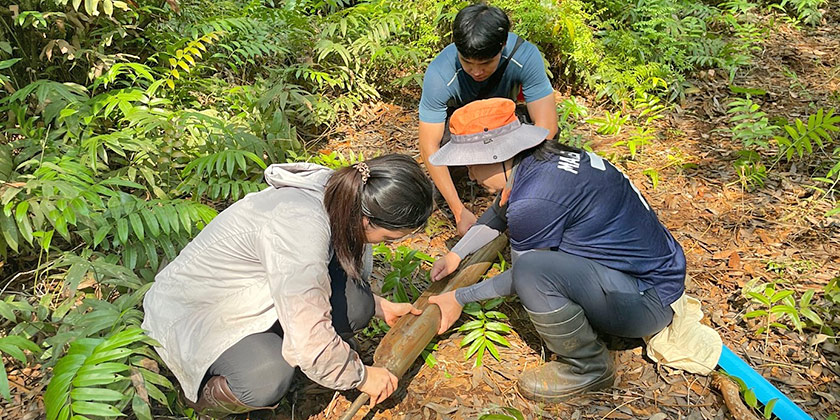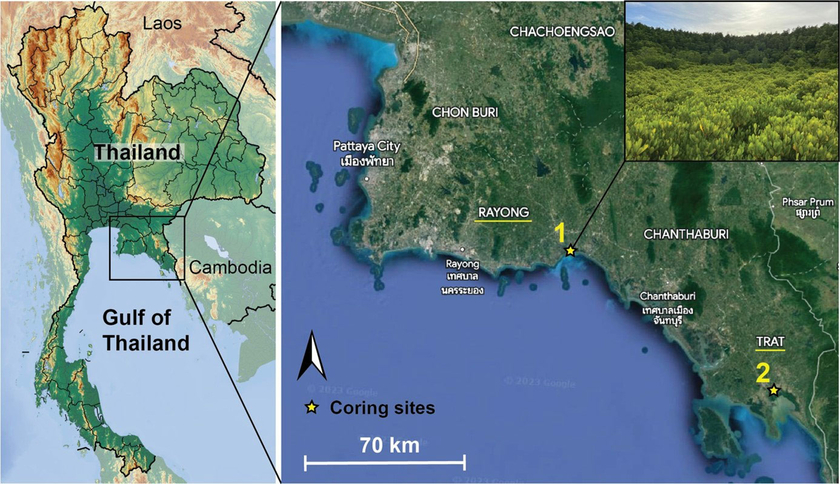Department Surface Waters - Research and Management
East Thailand paleoclimate and paleoenvironment

Paleoenvironmental reconstructions can provide information on how terrestrial and aquatic systems responded to past climate and sea level changes on a longer perspective. Such information is particularly crucial in countries such as Thailand, due to its long coastlines where slight variations in sea level and monsoon intensity can have a profound and significant impact on the environment, society, and economy.
However, little is known about the range and mechanisms of climate and sea level variations in this region due to an uneven distribution of paleoenvironmental data, particularly on human timescales such as the Holocene (<10,500 years ago).
The main research questions this project will answer is how the freshwater-marine environment from eastern Thailand responded to sea level changes and to changes in monsoon intensity and variability during the Holocene, and whether it was already impacted by humans and how.
To address these questions, sediment sequences were retrieved at two sites along the eastern Gulf of Thailand. We will use a multi-proxy approach, combining physical and geochemical proxies in sediment archives from mangroves and old lagoons to detect changes in rainfall variability and in salinity, human presence, changes in sedimentation rate, source of the organic material, organic matter decomposition and humification.
Funding
- SBFI Research Partnership Grants with East and Southeast Asia
- Scholarship to Kannika Wangritthikraikul from the Development and Promotion of Science and Technology Talents Project (DPST) in Thailand



